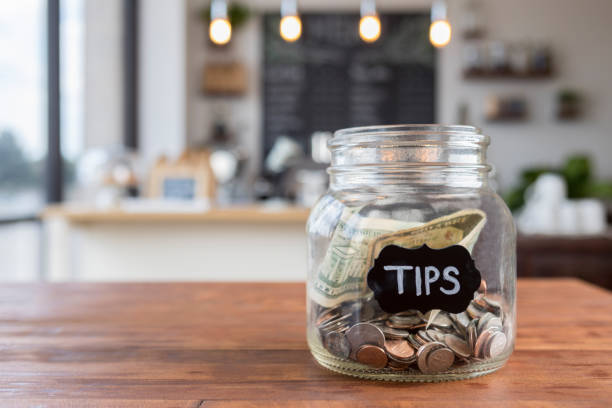 SHARE
SHARE
Do Tips Boost Employee Motivation? Here Are the Facts and the Right Way to Give Them in Restaurants
Briantama Afiq Ashari
Ever wondered why service in certain restaurants feels so much better? It might be because they have a tipping system that keeps their team motivated.
Tips are one of the most common forms of appreciation, yet often underestimated. In reality, their effect on work enthusiasm can be remarkable.
In the F&B industry, tips are a hot topic—from how they’re distributed to how they should be given.
If you’re building a food business or already own a restaurant, understanding how tips work is essential. Let’s break it down from the basics!
What Exactly is a Tip?
A tip is an extra amount of money given by customers as a token of appreciation for the service they receive.
It’s not part of the main bill, but it can impact staff welfare and serve as an indicator of service quality.
For management, tips can also be a performance metric—who often gets higher tips, and why? This insight can help evaluate staff without lengthy performance reviews.
Read Also: Prevent Financial Report Fraud with This Technology
Why Can Tips Motivate Employees?
Source: Istockphoto
Stories from various F&B business owners show the same pattern: restaurants that manage tips transparently usually have more loyal staff.
Employees feel valued and are more motivated to serve. Tips can be an instant morale booster—especially when paired with a fair distribution system.
Staff become more mindful of their attitude, quick to respond, and proactive with every order.
You’ve probably heard of restaurant employees willing to work overtime because customers were satisfied and left tips. That’s proof that tips are an effective driver of hard work.
Read Also: Want Loyal and Returning Customers? Implement Customer Intimacy Strategy Now!
The Right Way to Give and Manage Tips
Giving a tip is easy, but managing it within a restaurant requires clear rules:
-
Decide who’s eligible to receive tips.
-
Determine when they’ll be distributed.
-
Choose the distribution method.
Common methods include:
-
By shift: divided evenly based on hours worked.
-
By performance: bigger shares for higher contributions.
-
Rotation system: ensuring everyone gets a turn.
The key is transparency—everyone should know when and how much they’re receiving.
Tips Aren't Always About the Amount, But the Impact
Sumber: Istockphoto
For customers, tips may seem small. But for employees, even a single tip can energize an entire workday.
More than just extra cash, tips are direct recognition that their effort is appreciated.
Staff who regularly receive tips tend to be more service-conscious—they know that a smile, friendliness, and quick responses can lead to extra earnings.
How to Avoid Conflicts in Tip Distribution
Conflicts can arise when tip distribution is unclear. Misunderstandings about amounts, timing, or recipients can affect team unity.
Solutions:
-
Set a clear system from the start.
-
Apply shift-based, performance-based, or a hybrid approach.
-
Make sure everyone knows the schedule and calculation method.
Read Also: What is the importance of restaurant SOPs and what are examples of their implementation??
When Tips Become the Key to Loyalty
An example from fast-casual chain MAD Greens shows that implementing a fair and transparent tipping system reduced staff turnover from 162% to 128% in just two years, while providing an average of US$4/hour extra income for employees.
Industry studies also confirm that a structured tipping system makes employees feel valued, more loyal, and more motivated to serve—ultimately improving customer satisfaction and driving business growth.
FAQ – Common Questions About Restaurant Tips
1. What is a tip in a restaurant?
Extra money from customers as appreciation for service, outside the main bill.
2. Why are tips important for employees?
They provide motivation, make employees feel valued, and encourage better service.
3. What’s a reasonable tip percentage in a restaurant?
Typically 5–10% of the total bill, but it can be higher depending on service and policy.
4. How can tips be distributed fairly?
By shift, by performance, or by rotation—transparency is key.
5. Should tips be distributed daily or monthly?
Depends on the restaurant policy; daily lets employees enjoy immediate results, monthly is more efficient administratively.
Conclusion
Managing tips without a clear system is like letting customer appreciation lose its way.
With a modern, well-organized, and transparent tipping system, every reward can be distributed fairly, recorded automatically, and boost team morale.
And if you, as a restaurant owner, want tip recording and distribution to be fast, accurate, and connected, use ESB POSLite or ESB POS.
Build a stronger team and deliver better service—contact the ESB Team today!
 SHARE
SHARE




